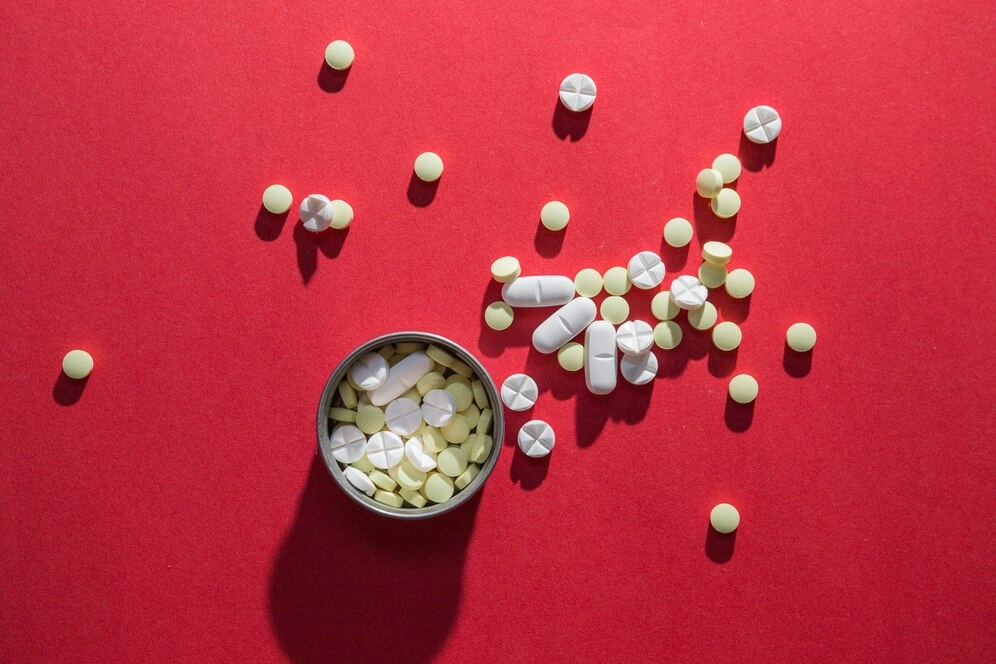
Addiction & Trauma Recovery Center
Licensed by Thai Ministry of Health #84-03-00294
Synthetic Drugs and Emerging Substances of Abuse
Introduction to Synthetic Drugs
Synthetic drugs are artificially manufactured substances designed to mimic the effects of natural drugs, such as cannabis, opioids, and stimulants. These substances are often chemically altered to bypass drug regulations, making them highly unpredictable and dangerous.
The dangers of synthetic cannabinoids like Spice and K2, as well as emerging synthetic drugs and their health risks, have led to an increase in overdose cases and long-term health complications.
Unlike traditional substances, synthetic drug dangers stem from their unknown chemical compositions, which can lead to severe physical and psychological reactions.
Another critical concern with synthetic drugs is their widespread availability and appeal, particularly among younger populations. Marketed as “legal highs” or “safe alternatives,” these substances are often sold in colorful packaging and labeled as potpourri, bath salts, or incense to evade legal restrictions.
This deceptive marketing can mislead users into believing they are consuming a harmless product, when in reality, they are ingesting untested and potentially lethal chemicals. The rapid evolution of synthetic drugs also poses a challenge for regulators and law enforcement, as manufacturers frequently alter chemical formulas to stay ahead of legal bans.
This constant modification means that even experienced users cannot predict the potency or effects of a particular batch, increasing the risk of overdose, severe health complications, or even death. Public education campaigns and stricter regulations are essential to combat the spread of these dangerous substances and protect vulnerable populations from their devastating effects.

The Risks of Synthetic Cannabinoids
Synthetic cannabinoids, also known as Spice, K2, or synthetic weed, are marketed as legal alternatives to marijuana. However, these lab-created substances are much more potent and pose serious health risks.
What Are Synthetic Cannabinoids?
Synthetic cannabinoids are man-made chemicals that bind to the brain’s cannabinoid receptors, mimicking THC but with far stronger and unpredictable effects.
Synthetic Cannabinoids Risks:
- Uncontrollable hallucinations and paranoia
- Severe agitation and violent behavior
- Heart attacks and strokes
- Kidney damage and organ failure
- Seizures and sudden death
Unlike natural cannabis, synthetic cannabinoids can be highly toxic, leading to dangerous side effects.
Dangers of Synthetic Cannabinoids Like Spice and K2
- Often laced with unknown toxic substances
- Some batches are 100 times stronger than THC, leading to overdoses
- Highly addictive and can cause severe withdrawal symptoms
An alarming aspect of synthetic cannabinoids is their potential to cause long-term neurological damage and mental health disorders. Chronic use of substances like Spice and K2 has been linked to persistent cognitive impairments, including memory loss, difficulty concentrating, and reduced problem-solving abilities. These effects can be particularly devastating for young users, whose brains are still developing.
Additionally, synthetic cannabinoids have been associated with the onset of severe psychiatric conditions, such as schizophrenia, bipolar disorder, and chronic anxiety, even in individuals with no prior history of mental illness. The unpredictable nature of these substances means that each use carries a significant risk of triggering a psychiatric episode or exacerbating existing conditions.
Furthermore, the lack of quality control in their production means that users are often unaware of the specific chemicals they are ingesting, making it nearly impossible to predict the short- or long-term consequences. This combination of physical, neurological, and psychological risks underscores the urgent need for public awareness and stricter regulation to prevent further harm.

Emerging Designer Opioids
As the opioid crisis continues, new emerging drugs of abuse are being synthesized, making them even more dangerous than traditional opioids.
What Are Designer Opioids?
Designer opioids are synthetic variations of fentanyl and other painkillers, often much stronger than heroin and highly lethal.
Most Dangerous Designer Opioids
- Carfentanil – 100 times more potent than fentanyl, originally developed as an elephant tranquilizer.
- U-47700 (“Pink”) – A deadly opioid linked to overdoses worldwide.
- Flakka (Alpha-PVP) – A synthetic stimulant with unpredictable and violent effects.
Many designer opioids are sold as counterfeit painkillers, leading users to unknowingly ingest deadly doses.
One of the critical concern with designer opioids is their role in the escalating overdose epidemic, particularly due to their potency and the difficulty in detecting them. These substances are often mixed into other drugs, such as heroin or counterfeit pills, without the user’s knowledge, significantly increasing the risk of accidental overdose. For example, a dose as small as a grain of salt of carfentanil can be fatal, and its presence in the drug supply has led to a surge in overdose deaths in recent years.
Additionally, the rapid emergence of new designer opioids makes it challenging for law enforcement and healthcare providers to keep up, as these substances are often not yet classified as illegal or detectable by standard drug tests. This creates a dangerous environment where users are unaware of what they are consuming, and first responders may struggle to effectively treat overdoses due to the lack of information about the specific substances involved.
Public health efforts must focus on increasing awareness, improving drug testing capabilities, and expanding access to overdose-reversal medications like naloxone to combat this growing threat.
The Dangers of Illicitly Manufactured Drugs
One of the biggest synthetic drug dangers is that these substances are often illicitly manufactured with no regulation, meaning users never know what they are actually consuming.
How Are Synthetic Drugs Different from Natural Substances?
- Natural drugs (e.g., cannabis, cocaine, opium) come from plant sources.
- Synthetic drugs are lab-made chemicals that often contain unknown and dangerous additives.
- Synthetic versions are often far more potent and toxic than their natural counterparts.
Health Risks of Emerging Synthetic Drugs
- Sudden and unpredictable overdoses
- Permanent brain and organ damage
- Severe addiction potential
- Psychosis and violent behavior
Because emerging synthetic drugs are constantly changing, treatment and medical intervention are challenging.
A significant danger of illicitly manufactured synthetic drugs is their potential to cause long-term, irreversible damage to the body and mind. Unlike natural substances, which have been studied for decades, synthetic drugs are often created in clandestine labs with little to no research on their long-term effects.
This lack of understanding means that users may unknowingly expose themselves to chemicals that can cause chronic health conditions, such as liver failure, kidney damage, or cardiovascular disease. Additionally, the psychological impact of synthetic drugs can be devastating, with some users experiencing persistent hallucinations, paranoia, or cognitive impairments long after they stop using.
The unpredictable nature of these substances also complicates medical treatment, as healthcare providers may not know how to effectively counteract their effects or manage withdrawal symptoms. This underscores the importance of public education campaigns to raise awareness about the dangers of synthetic drugs and the need for stricter regulations to curb their production and distribution. By addressing these challenges, we can better protect individuals from the hidden and often catastrophic risks associated with illicitly manufactured drugs.
Treatment for Synthetic Drug Addiction
Since synthetic drugs affect the brain differently than traditional drugs, their withdrawal symptoms can be severe and difficult to manage.
What Should One Do if They Suspect Synthetic Drug Use?
- Recognize the Signs:
- Sudden aggressive behavior or paranoia
- Extreme confusion or hallucinations
- Chest pain or difficulty breathing
- Seizures or unconsciousness
- Seek Immediate Medical Help:
- Synthetic drug overdoses can be life-threatening, requiring emergency intervention.
- Long-Term Treatment Options for Synthetic Drug Addiction:
- Medical Detox – To remove toxic substances safely.
- Inpatient Rehab – Provides structured therapy and recovery support.
- Behavioral Therapy – Cognitive Behavioral Therapy (CBT) helps address psychological dependence.
- Support Groups – Narcotics Anonymous (NA) and SMART Recovery provide long-term peer support.
The critical aspect of treating synthetic drug addiction is addressing the unique challenges posed by the ever-changing nature of these substances. Because synthetic drugs are frequently altered to evade legal restrictions, their chemical compositions can vary widely, leading to unpredictable withdrawal symptoms and treatment needs.
This variability requires a highly individualized approach to care, where medical professionals must continuously adapt treatment plans based on the specific substance and its effects on the patient. Additionally, the psychological toll of synthetic drug use—such as paranoia, psychosis, and severe mood swings—often necessitates specialized mental health support, including trauma-informed therapy and psychiatric care.
Family involvement in the recovery process can also be crucial, as loved ones can provide emotional support and help create a stable environment that reduces the risk of relapse. By combining medical, psychological, and social interventions, treatment programs can offer a comprehensive approach to recovery, helping individuals overcome the unique challenges of synthetic drug addiction and rebuild their lives.
FAQs About Synthetic Drugs
What are synthetic drugs and why are they dangerous?
Synthetic drugs are man-made substances designed to mimic natural drugs, but they are far more unpredictable, potent, and toxic, often leading to overdoses and long-term health effects.
Manufacturers frequently alter the chemical structures of these substances to bypass legal restrictions, creating new variants that are often more potent and harmful than their predecessors.
This constant evolution means that users are essentially experimenting on themselves, as the effects and risks of each new batch are unknown. Additionally, synthetic drugs are often marketed deceptively as “safe” or “legal” alternatives to natural drugs, misleading users into underestimating their dangers.
The lack of quality control in their production further compounds the risks, as these substances may be contaminated with other toxic chemicals or inconsistent in potency.
How are synthetic drugs different from natural substances?
Unlike natural drugs, synthetic substances are chemically altered, making them stronger and more dangerous, often containing unknown additives.
Another key difference between synthetic and natural substances lies in their production and accessibility. Natural drugs, such as cannabis or opium, are derived from plants and have been used for centuries, allowing for a better understanding of their effects and risks. In contrast, synthetic drugs are created in laboratories, often by unregulated manufacturers who prioritize profit over safety.
This industrial process allows for the rapid production of large quantities, making synthetic drugs more accessible and affordable, particularly in underserved or marginalized communities. Furthermore, the chemical alterations made to synthetic drugs can result in substances that interact with the brain and body in ways that are far more intense and harmful than their natural counterparts.
What should one do if they suspect synthetic drug use?
Seek immediate medical attention if someone shows signs of synthetic drug use. Overdoses can be fatal, and long-term treatment may be necessary for recovery.
Seek immediate medical help, it’s important to approach the situation with care and compassion to avoid escalating the individual’s distress. Synthetic drug use can cause extreme paranoia, aggression, or confusion, so maintaining a calm and non-confrontational demeanor is crucial when interacting with someone under the influence.
If possible, gather information about the substance used, such as packaging or residue, to help medical professionals provide appropriate care. After the immediate crisis is addressed, encourage the individual to seek long-term support, such as addiction treatment programs or counseling, to address the underlying causes of their drug use.
Conclusion
The dangers of synthetic cannabinoids like Spice and K2, along with emerging synthetic drugs and their health risks, make synthetic substances some of the most unpredictable and lethal drugs available.
Because synthetic drug dangers include severe psychological and physical side effects, it’s crucial to seek professional help for treatment for synthetic drug addiction.
If you or a loved one is struggling with synthetic drug abuse, reach out for medical and psychological support today.
Many individuals, particularly young people, may experiment with synthetic drugs due to misconceptions about their safety or legality. Public awareness campaigns that highlight the severe risks of these substances—such as their unpredictable potency, potential for overdose, and long-term health consequences—can help deter experimentation and encourage safer choices.
Schools, community organizations, and healthcare providers can play a key role in disseminating accurate information and promoting harm reduction strategies, such as drug education programs and access to fentanyl test strips. Additionally, policymakers must prioritize stricter regulations on the production and distribution of synthetic drugs, as well as increased funding for research into their effects and treatment options.
By combining prevention efforts with accessible treatment and support, we can work toward reducing the devastating impact of synthetic drugs on individuals, families, and communities.





















